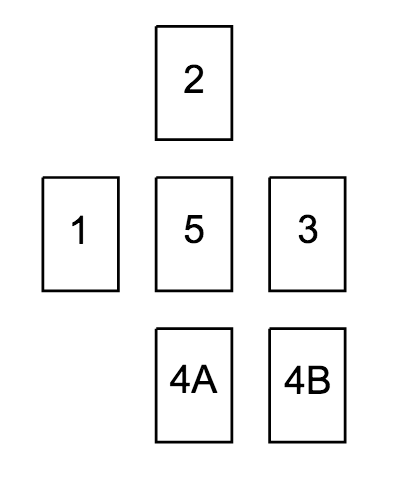Let’s make some more aberrations!
A few weeks ago I made the case for needing more high challenge rating aberrations than the ones in the Monster Manual for my soon-to-be-published Exploration Age campaign setting. There’s only 19 total aberration stat blocks in the book, and the highest CR is 14 (beholder in lair), so you might want some more aberrations for your world too! That’s why I’m sharing them on this blog.
In that post I showed off the Lovecraft-inspired moonbeast. In this post I’m showing off the hound of Tindalos.

Publisher’s Choice Quality Stock Art © Rich Hershey / Fat Goblin Games
Hound of Tindalos
Little is known about the hounds of Tindalos, since few people see one and live to tell the tell. These mind-bending beings have thin canine bodies and bat-like faces. Like many aberrations, their unsettling, bestial appearance belies their clever, murderous minds. They are named for the city of their origin in the Far Realm.
Planar Predators. The odd physiology of the hounds allows them to teleport instantly across the planes. These beasts constantly hunger for the lifeblood of spellcasters. The more accomplished the caster, the greater the hound’s hunger for that person. Since beings of such power are rare on a single plane, the beasts stalk the multiverse for new victims.
Relentless Hunters. Hounds of Tindalos never give up on prey once they’ve decided to pursue it. Their bodies are sensitive to subtle changes in magical currents. As such they can tell when a being near them teleports, alters time, or travels through time (be it physically with a spell like time stop or a simple glance into the future or past with a spell like legend lore). It uses this sense to hunt creatures of magical power and follows them through the multiverse until it sees an opportunity to strike.
Hound of Tindalos
Medium aberration, chaotic evil
Armor Class 20 (natural armor)
Hit Points 189 (18d8 + 108)
Speed 50 ft.
| STR | DEX | CON | INT | WIS | CHA |
| 20 (+5) | 24 (+7) | 22 (+6) | 19 (+4) | 20 (+5) | 24 (+7) |
Saving Throws Dex +12, Wis +10, Cha +12
Damage Resistances bludgeoning, piercing, and slashing damage from nonmagical weapons
Condition Immunities exhaustion
Skills Perception +10, Survival +10
Senses truesight 120 ft. passive perception 20
Languages Deep Speech, telepathy 120 ft.
Challenge 15 (13,000 XP)
Magic Resistance. The hound has advantage on saving throws against spells and other magical effects.
Magic Sensitivity. The hound automatically knows when the exact location of a spellcaster casting a conjuration, divination, or transmutation spell is cast within 1 mile of its location. If the spell moves the spellcaster (e.g. dimension door) the hound knows the exact location to which the spell took the caster, even if that location is outside the 1-mile range of the hound’s sensitivity.
Magic Weapons. The hound’s weapon attacks are magical.
Spellcasting. The hound’s spellcasting ability is Charisma (spell save DC 20, +12 to hit with spell attacks). It can innately cast the following spells, requiring no material components.
At will: detect magic, locate creature, locate object
3/day: dispel magic, phantasmal killer, scrying
1/day: time stop
Actions
Multiattack. The hound can use Paralyzing Howl and make three attacks: two with its claws, and one attack with its bite or proboscis.
Bite. Melee Weapon Attack: +12 to hit, reach 5 ft., one target. Hit: 18 (2d10 + 7) piercing damage. If the target is a creature it is then grappled (escaped DC 18). Until the grapple ends the target is restrained and the hound cannot use its bite against another target.
Claw. Melee Weapon Attack: +12 to hit, reach 5 ft., one target. Hit: 14 (2d6 + 7) slashing damage.
Proboscis. Melee Weapon Attack: +12 to hit, reach 5 ft., one creature that is grappled by the hound, incapacitated, or restrained. Hit: 14 (2d6 + 7) piercing damage plus 20 (6d6) necrotic damage. The target’s hit point maximum is reduced by an amount equal to the damage taken and the hound regains hit points equal to that amount. The reduction lasts until the target finishes a long rest. The target dies if this effect reduces its hit point maximum to 0.
Angled Entry. The hound can cast plane shift at-will, but it can only cast the spell on itself and its destination point must be adjacent to a fixed angle or corner in the physical environment, such as a wall, floor, or ceiling (as determined by the GM); temporary angles created by cloth, flesh, or Tiny or smaller items are not sufficient. It cannot use this ability to enter curved architecture or open outdoor environments.
Paralyzing Howl. Creatures within 30 feet of the hound that can hear the creature must succeed on a DC 20 Wisdom saving throw or become paralyzed for 1 minute. A creature can repeat the saving throw at the end of each of its turns, ending the effect on itself on a success. If a creature’s saving throw is successful or the effect ends for it, the creature is immune to the Paralyzing Howl of all hounds of Tindalos for the next 24 hours.
Would you like this Lovecraftian beastie to threaten your players’ characters? Grab it now in its own PDF or alongside a lot of Exploration Age’s monsters! Like the icebreaker shark, gaping maw, morchia, and mystauk.
Hound of Tindalos
All Monsters
If you liked these creatures be sure to check out my other offerings in the Free Game Resources section of this site and my Pay What You Want products on the DMs Guild for backgrounds, magic items, optional rules, and more.
Playtest It Up
Now I ask you my readers to please go forth and test this nasty. Throw it at your players and see how they fare! If you have any feedback for my monster please leave it in the comments below or email me ([email protected]). If you tell me your name and the names of your players I’ll give you credit as playtesters in the Exploration Age Campaign Guide!
If you like what you’re reading please follow me on Twitter, check out my podcasts, find my products on the DMs Guild, tell your friends about the blog, and/or leave me a comment and let me know you think. Thanks!












